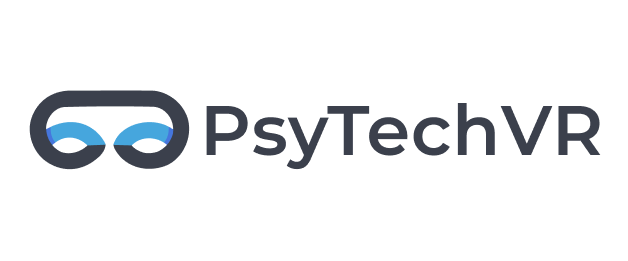Clinical Research Studies
Proudly presenting three research studies carried out in
partnership with major universities.
partnership with major universities.
Clinical Evidence
of VR Therapy
of VR Therapy

PsyTechVR’s solutions, developed in collaboration
with Dr. Rizzo, reduce anxiety,
and phobia symptoms by up to 45%,
with 90% preferring VR therapy.
with Dr. Rizzo, reduce anxiety,
and phobia symptoms by up to 45%,
with 90% preferring VR therapy.
PsyTech VR Study #1


- PROBLEMTraditional exposure therapy, often used to treat phobias (like fear of heights), is highly effective but has limitations. These include high costs, limited accessibility, and the discomfort of facing real-life triggers
- OPPORTUNITYVirtual reality (VR) offers a safer and more controlled environment to expose patients to their fears, which may address these barriers.
- OBJECTIVEThis study explored whether VR therapy is as effective as traditional methods in reducing fear and anxiety while making therapy more flexible and accessible

KEY RESEARCH GOALS
- Evaluate the effectiveness of XR-based exposure therapy for phobias (acrophobia and agoraphobia)
- Examine the role of 'presence' (immersion, fluidity, authenticity) in enhancing therapy outcomes.
METHODOLOGIES USED
- PARTICIPANT GROUPS45 participants (18-25 years), divided into three groups: XR exposure, traditional therapy, and time-delay control.
- PHYSIOLOGICAL MONITORINGMonitored physiological markers (heart rate variability, electrodermal activity, skin temperature).
- DATA COLLECTION PROCESSData collected pre- and post exposure using FDA-approved Empatica E4 sensors.
KEY RESULT AND FINDINGS
- CLINICAL EFFICACYXR therapy showed parity with traditional exposure therapy in reducing phobic responses.
- USER PREFERENCE90% of participants preferred XR therapy over traditional methods, especially for phobias like fear of spiders.
- QUANTIFIABLE RESULTS
- Significant improvements in physiological measures:
Heart Rate Variability (HRV): Improved by 25%.
Electrodermal Activity (EDA): Reduced by 18%.
- Measured autonomic responses (HRV, EDA) showed strong links with the impact of XR environments.
CONCLUSIONS AND IMPLICATIONS
- WHAT WE FOUND (WITH NUMBERS):
- VR therapy was as effective as traditional therapy in reducing fear responses, with no significant difference between the two.
- 90% of participants with arachnophobia (fear of spiders) preferred VR therapy over traditional methods.
- Physiological measures showed significant improvement:
- Electrodermal activity (stress-related sweat response): Reduced by 18% during VR sessions - WHY IT MATTERS:
- VR therapy offers cost-effective and scalable treatments, potentially reducing therapy costs by 30%-40% due to fewer in-person sessions needed.
- With customizable environments, therapists can tailor treatments to individual needs, increasing the success rate (86% for exposure therapy in general).
UNIVERSITY OF GEORGIA
PsyTech VR Study #2


- PROBLEMPsychotherapists experience high stress, with over half reporting burnout. Long relaxation programs are hard to fit into busy clinical schedules, and effective well-being interventions remain limited.
- OPPORTUNITYBrief (1–5 min) relaxation exercises work well, and VR can deliver them in a low-effort, engaging way. AI personalization makes the experience more tailored and easier to adopt in workplace settings.
- OBJECTIVEEvaluate whether a short (<4 min) AI-personalized VR safe-place intervention can improve subjective and physiological relaxation, reduce stress, and support therapist well-being over six weeks.

KEY RESEARCH GOALS
- Assess whether the PsyTechVR AI-powered Safe-Place exercise increases subjective and physiological relaxation.
- Determine if weeks following VR sessions show stronger reductions than imagination weeks.
- Test whether a stronger presence boosts relaxation during VR sessions.
METHODOLOGIES USED
- PARTICIPANTS AND SETUP5 psychotherapists (outpatient setting), completing 6 weeks of alternating sessions: Baseline, Imagination, and VR (AI-personalized safe-place). Interventions were brief (<4 minutes) and co-designed with participants.
- DATA COLLECTIONSubjective relaxation (RSQ-GR, rVAS) and physiological relaxation (Skin Conductance Level) measured before and after each session. Weekly measures collected for burnout (CBI) and perceived stress (PSS-10).
- ANALYSIS AND TECHNOLOGYVR delivered through Meta Quest 3 with AI-generated safe-place environments based on participant keywords. Individual factors assessed using imagery ability (PSI-Q) and presence in VR (IPQ).
KEY RESULT AND FINDINGS
- MEASURABLE RELAXATION BOOST
- Sessions in VR Safe-Place showed large relaxation effects (r > .50) on RSQ-GR and rVAS.
- Physiological calming confirmed: Skin Conductance Level decreased significantly in VR Week 3.
- VR consistently triggered a real, measurable relaxation response.
- PRESENCE MULTIPLIES THE EFFECT
- Higher presence in VR was strongly linked to stronger relaxation: Week 3 correlation: rₛ = .89, p = .021.
- The more immersive the environment, the more PsyTechVR calms the user.
- PRESENCE MULTIPLIES THE EFFECT
- 4 of 5 Participants (psychotherapists) would recommend PsyTechVR relaxation to their Patients
CONCLUSIONS AND IMPLICATIONS
- WHAT WE FOUND (WITH NUMBERS):
- Both methods worked: PsyTechVR’s AI-personalized VR and traditional imagination increased relaxation (large effects, r > .50).
- Physiological proof: Skin Conductance Levels dropped significantly during VR (Week 3), confirming real calming.
- AI personalization rated highly: Match to expectations: 75.40/100
- Presence boosts outcomes: Higher immersion in VR strongly predicted relaxation (rₛ = .89, p = .021).
- Users want more VR: 4/5 psychotherapists would recommend VR to their patients
- WHY IT MATTERS:
- PsyTechVR delivers fast, measurable relaxation in under 4 minutes, fitting perfectly into clinical workflows.
- AI-built safe places make personalization effortless and scalable.
- The feasibility and user satisfaction indicates that PsyTechVR is a science-backed, workplace-ready well-being tool.
Paris Lodron University of Salzburg
PsyTech VR Study #3


- PROBLEMUnderstanding and measuring fear during therapy is challenging. Traditional methods rely on self-reported feelings, which may not be accurate or real-time.
- OPPORTUNITYAdvanced brain activity tracking (via EEG) combined with VR creates a new way to monitor fear responses objectively and in real-time.
- OBJECTIVEThis study tested whether brainwave data (EEG) could be used with machine learning to classify and manage fear levels during VR therapy sessions.

KEY RESEARCH GOALS
- Use EEG signals to assess acrophobia severity in real-time during VR exposure.
- Evaluate machine learning and deep learning classifiers for classifying fear levels.
METHODOLOGIES USED
- PARTICIPANTS AND SETUP18 participants (20-35 years), exposed to VR environments like bridges and skyscrapers.
- DATA COLLECTIONEEG signals collected using Emotiv Epoc+ headset.
- ANALYSIS AND TECHNOLOGYAnalyzed using classifiers: CNN, ANN, Random Forest, and KNN.
KEY RESULT AND FINDINGS
- CNN AND ANN PERFORMANCECNN (Convolutional Neural Network)achieved exceptional accuracy with 99% on testing, while ANN (Artificial Neural Network) followed closely with 97%, showcasing the power of deep learning in real-time fear detection.
- EEG SIGNAL INSIGHTSHigh-beta and gamma brainwave activity showed a strong correlation with acrophobic responses, providing critical biomarkers for fear detection.
- KNN SUCCESS IN TRADITIONAL METHODSAmong traditional machine learning models, KNN (K Nearest Neighbors) stood out with 86% accuracy, highlighting its reliability in classifying fear levels.
CONCLUSIONS AND IMPLICATIONS
- WHAT WE FOUND (WITH NUMBERS):
- Machine learning classifiers used EEG brain data to predict fear levels with high accuracy:
- Artificial Neural Network (ANN): 97% accuracy.
- K-Nearest Neighbors (KNN): 86% accuracy (best among traditional machine learning methods).- High-beta and gamma brainwave activity strongly correlated with fear responses, with correlations as high as r = 0.85.
- Participants reported a 45% reduction in fear symptoms after just six VR therapy sessions.
- WHY IT MATTERS:
- PsyTechVR's use of EEG-based fear monitoring ensures real time precision, helping therapists adjust therapy dynamically.
- The technology can classify fear levels into four categories (relaxation, mild fear, moderate fear, and intense fear) with nearly perfect accuracy, making it ideal for highly tailored therapy
SAPIENZA UNIVERSITY
OUR NEXT STUDIES
These ongoing studies are actively underway, with results expected to be unveiled in 2025
RESULTS IN Q2 2026
Stanford University Psychiatry Department (USA)
Studying the effectiveness of VR exposure therapy with biofeedback for autistic individuals using Imaginal Exposure
RESULTS IN Q4 2026
Clalit Health Services (Israel's Largest Healthcare Provider)
Assessing PsyTechVR’s software for relaxation, exposure, and EMDR therapy to integrate into Israel's largest health system
RESULTS IN Q4 2026
Kocaeli University Faculty of Medicine
Comparison of the effectiveness of Virtual Reality Exposure Therapy and Sertraline treatment in Social Anxiety Disorder
RESULTS IN Q4 2026
UC/UC Health Addiction Center
Enhancing Relapse Prevention for Substance Use Disorders Using Immersive VR: Evaluating Its Acceptability, Feasibility, and Appropriateness
| | Get in touch We're ready to lead you into the future of mental health Sending this information you agree to share your personal information according and limited by our confidentiality statement. |




















